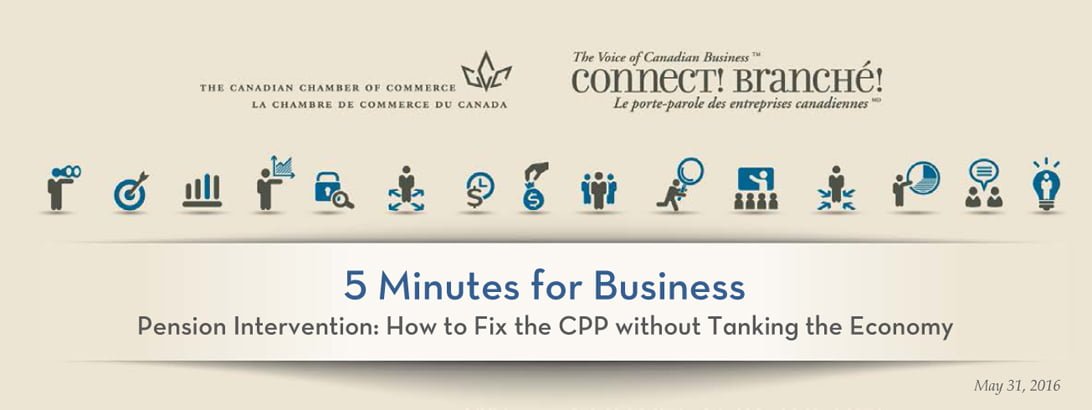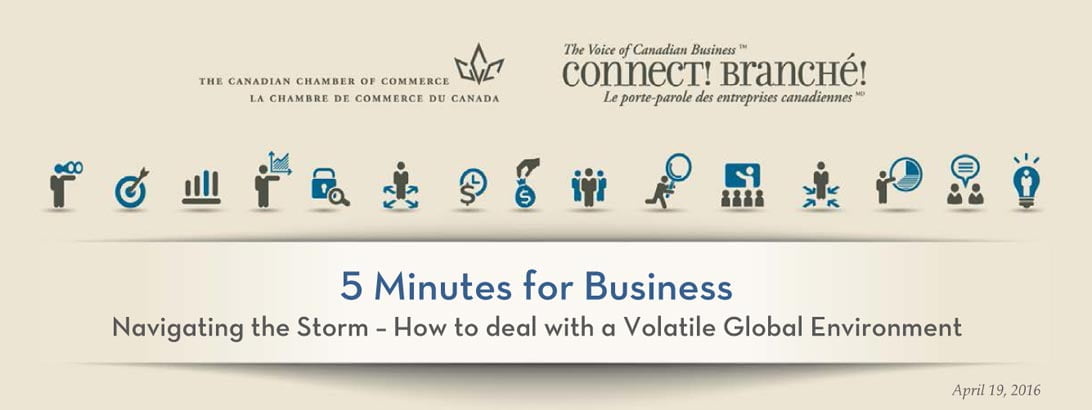
NDP Private Member’s Bill (PMB) would disrupt our economy if passed
Bill C-234, sponsored by NDP MP, Karine Trudel (Jonquière), is the latest in a series of PMBs that have been introduced over the past decade that propose to prohibit federally-regulated employers from using temporary replacement workers during a labour disruption.
Federally-regulated businesses provide essential services to Canadians that touch their lives including telecommunications, transportation and broadcasting. Denying these companies the ability to use replacement workers to keep providing these services during a work stoppage would have ripple effects throughout the entire economy, including:
- Marine shipping grinding to a halt affecting annual deliveries to the Arctic as well as international trade and supply chains throughout the country.
- Air and/or rail transportation shutting down leaving passengers – and goods – stranded.
- Telecommunications service disruptions remaining unresolved affecting voice and data communications including the internet.
If passed, Bill C-234 would result in a near total prohibition on the use of temporary replacement workers. Under this bill, workers could only be replaced (1) with managers, superintendents, etc. or (2) in the event employer property is at risk of destruction or serious damage. Under all other circumstances, an employer would find itself in a situation where it could not continue to operate in the event of a strike.
Proponents of a ban on the use of replacement workers argue that it would reduce strike activity. However, the vast majority of employers under federal jurisdiction are large companies with many employees represented by sophisticated labour unions. Relationships are long-standing, mature and working effectively under the Canada Labour Code. In the past three years, the federal sector has seen limited strike activity – three strikes in 2013, five in 2014 and 12 in 2015. Bill C-234 is a solution to a problem that does not exist.
If you or your colleagues are meeting with members of Parliament, we ask that you flag your concerns with this bill and the harm it could cause to all Canadians if passed. We have developed a “leave-behind” document that you may wish to share with your MP — either in meetings or electronically.
For more information, contact Susanna Cluff-Clyburne, director, parliamentary affairs, scluff-clyburne@chamber.ca.
TPP consultations – business needs to be heard!
The House of Commons Standing Committee on International Trade is conducting a study on the Trans-Pacific Partnership (TPP) agreement. The committee’s primary objective is to assess the extent to which the agreement, if implemented, would be in the best interests of Canadians. The study will result in a report to be presented in the House of Commons.
As part of its study, the committee is inviting Canadian individuals and organizations to provide written submissions that express their views on the TPP agreement. The committee is also inviting Canadians to request to appear as a witness before the committee, either as an individual or as a representative of an organization.
Next week, the committee will have consultations in a number of cities in western Canada. But individuals and organizations can also provide a written submission and must do so before 23:59 EDT on April 30, 2016. Written submissions are to be no more than 1,500 words. (More information on the process for providing a written submission can be found in the Guide for Submitting Briefs to House of Commons Committees. Written submissions should be emailed to: ciit-tpp-ptp@parl.gc.ca.
In the fall when TPP negotiations concluded, we shared an FAQ document with you that speaks to questions you/your members may have about the TPP. We also held a teleconference call, which we recorded and you can still listen to.
Should you have specific issues that you are unclear on or unsure of, please send us a quick note; we’d be happy to discuss any thoughts you may have.
When it comes down to it, the government needs to hear from business – not just the naysayers; this is an important agreement and opens the doors of opportunity for Canadian enterprise. Let’s have the voice of business be heard!
Publications update:
This week we released our latest report entitled Canada’s Next Top Trade Barrier: Taking International Regulatory Cooperation Seriously.
Nearly every international business has a horror story about getting its products approved in a new market. From redesigning a headlight because it tilted a few degrees higher to losing a shipment of cookies at the border because they were made with regular (unfortified) flour, companies from all sectors spend enormous amounts of money and time navigating and complying with a vast web of divergent regulations.
Good regulation is a force for competitiveness. Demanding and evidence-based regulation protects the health, safety, environment and pocketbooks of Canadians. It builds trust with consumers and gives companies confidence to invest. But Canada’s rules do not carry much weight with its trading partners, who prefer to create their own rules. Sometimes Canada, too, fails to recognize when others get it right. So the world is left with a patchwork of divergent regulations that gums up supply chains and undermines international trade and investment.
So what is Canada doing about it? Its free trade agreements are good at taking down tariffs, but they have not had much success with regulatory issues. Our report explores this important gap in Canada’s trade policy and outlines a new international regulatory cooperation strategy for the federal government. Please feel free to share the report!
Also… as he paces about the office waiting to be a new dad, we’ve given Hendrik Brakel a break from authoring 5 Minutes for Business, but it needs to roll off the presses none-the-less. We’ve got some guest authors lined up so, next week, watch for Mark Wiseman, president and CEO of the CPP Investment Board, our first guest columnist.
Rethinking the Business Model? Strat planning on steroids
Our chief operating officer Guy Legault has been serving a dual role this year; he’s got a busy day-to-day role at the Chamber – overseeing our operations and, after hours, he’s the chair of the Canadian Society of Association Executives (CSAE). Guy came to us with a world of association/not-for-profit experience. As many involved in the membership world know, the membership model is shifting and changing. You know it. We know it. There are new types of members, stakeholders and customers. And, we’re all looking for new ways to serve all of these groups with the same or shrinking revenues. But what to do about it? CSAE began a business model review in 2014 and work continues in 2016. Guy has been along for the work at CSAE and is now turning his experience and efforts to the Chamber.
The CSAE process has required “out of the box” thinking, some of which required going beyond the conventional wisdom of associations… i.e. that their only customers were current duespaying members. Widening their definition of “customer” to include association board members, “F-10s” (managers in the first decade of their careers) and “growth-oriented” associations was a critical step in fashioning a business model capable of generating significant future growth.
If you’d like to get a sense of what this type of process has been like, CSAE has shared two podcasts (part 1) and (part 2) with Guy and their CEO Michael Anderson on the business model review that CSAE is undergoing.
Let’s Talk About Growing Your Business │ Let’s Talk Exports – Annual Cross-Canada Tour | April 26 – June 2, 2016
Let’s Talk Exports is your chance to get the most up-to-date information available on what the global economy has in store for exporting businesses of all sizes, in all sectors.
Volatility struck global markets with a vengeance in the opening months of the year. Stock markets, commodities, sovereign bonds and currencies were all swept up in the wild ride. Are the wheels of the world economy getting loose? Is this the natural point for another global recession, or is the cyclone contained? And will there be an end to the commodity price plunge? Is Canada’s winning streak at an end, or are there opportunities to pursue?
Join Peter G. Hall, VP & Chief Economist at Export Development Canada, to hear answers to these and other questions about the global economy and its effects on Canada, along with forecasts of the Canadian dollar, commodity prices and growth in your industry.
Visit Let’s Talk Exports for more information and to register. Located in Vancouver? This May, Let’s Talk Exports will be the keynote session at the half-day Exporting Unleashed 2016 event.
Canada’s Resource Champions
We are pleased to announce two more Resource Champions Awards. Winners nominated fall into two categories: individuals or corporations.
Nominated as an individual champion, Steve Moran is president and CEO of Corridor Resources, an Eastern Canadian junior resource company, engaged in the exploration for and development and production of petroleum and natural gas in eastern Canada. Steve was nominated by Valerie Roy, president & CEO, of the Atlantic Chamber of Commerce; you can learn more him by reading his nomination.
Our newest organization nominated as a Resource Champion, is Emera. Emera was created out of the privatization of the provincial Crown corporation Nova Scotia Power Inc. An energy and services company, Emera is based in Halifax. They were nominated by the Halifax Chamber of Commerce (NS). Read all about Emera in its nomination profile
Chamber news!
A new chamber joins the Canadian chamber network!
We are pleased to welcome a new chamber to our unique network of businesses: The Trent Hills Chamber of Commerce (ON), Nancy Allanson, executive director, nancy@trenthillschamber.ca.
New leaders in the network
Please join us in welcoming the following new chamber execs to the chamber network; if they’re in your region of the country — why not welcome them to the network?
Dustin Hemmingson, president, Bashaw & District Chamber of Commerce (AB), bashawcc@gmail.com.
Lisa Vanderkwaak, president, Beaumont Chamber of Commerce (AB), dvanderkwaak@embroidme.ca.
Britten Snatic, executive director, Beaverlodge Chamber of Commerce (AB), beavercc@telus.net.
Andrea Yaremie, executive director, Bonnyville & District Chamber of Commerce (AB), manager@bonnyvillechamber.com.
Chris Pinchin, secretary, Bow Island/Burdett & District Chamber of Commerce (AB), chamber@bowislandchamber.com.
Suzanne Jackett, president, Bragg Creek & Area Chamber of Commerce (AB), suzanne@braggcreekchamber.com.
Nathalie Benoit, manager, Chamber of Commerce of Drummond (QC), nbenoit@ccid.qc.ca.
Lorna Wood, manager, Dryden District Chamber of Commerce (ON), chamber@drytel.com.
Jonny Nielsen, president, Elk Point Chamber of Commerce (AB).
Anne-Marie Proulx, general manager, Chamber of Commerce of Gatineau (QC), aproulx@ccgatineau.ca.
Daisy Lachance, general manager, Chamber of Commerce of Lac Mégantic (QC), dg@ccrmeg.com.
Nancy Shaw, CEO & general manager, Greater Oshawa Chamber of Commerce (ON), ceo@oshawachamber.com.
George Brothers, general manager, Peace River & District Chamber of Commerce (AB), manager@peaceriverchamber.com.
Pieter Van Ewijk, administrator, Picture Butte & District Chamber of Commerce (AB), chamber@picturebutte.ca.
Congratulations… to Françoise Bertrand, president & CEO of the Fédération des chambres de commerce du Québec who was honoured recently by the Public Policy Forum for her exceptional contributions to public policy. In her acceptance remarks, Madame Bertrand said “I share this honour with the network of chambers of commerce first in Québec but across Canada, because working together: we make a difference!” You can read her acceptance remarks here.






 May 12, 2016
May 12, 2016





